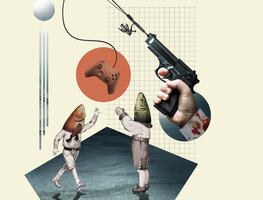Más Información

Videojuegos, el nuevo gancho del crimen para captar menores; los atraen con promesas de dinero y poder

“Vamos a dar apoyo a los pequeños agricultores por sequía en Sonora”; Claudia Sheinbaum instruye a Berdegué

Derrota de México en disputa por maíz transgénico contra EU; estos son los argumentos de Sheinbaum y AMLO para prohibirlo
During the most intense years of the so-called war on drugs – the previous administration – Mexico City was considered an oasis amidst the everyday violence taking place in other regions of the country. People in the capital bragged about being free to walk the streets at night without fear of becoming a victim of crime.
Currently, the city is still considered the reference point for evaluating insecurity in other major cities of the country, but figures tell of an increase in crime rate.
There have been cases of clients being robbed at restaurants and cafes in areas long considered safe, while sensational news items report homicides everyday of people who were murdered in the streets by unknown individuals riding a moving vehicle, resembling execution-style killings.
Weeks ago, the Tláhuac borough was flooded by Federal and Navy corps during an operation to capture the leader of a criminal gang who controlled the drug distribution and sale in great part of the city. Moreover, EL UNIVERSAL publishes today the following fact: in the last two years, small-scale drug dealing has increased by 50% according to the number of drug points of sales known by the authorities. In 2015, the Ministry of Public Security was aware of 13 thousand points of sale, yet by January 2017 they knew of 20 thousand. No borough in Mexico City is free from drug dealing.
In several cases, neighbors know the exact places but not the authorities, and that leads to one of the possible causes of this increase: the inaction of those who have the obligation to fight drug trafficking. A problem like this cannot be minimized or evaded. If Mexico City has no drug cartels – like public officials say – then how is drug distributed every day to 20 thousand points of sale? There has to be a group – or three – controlling the trade.
Experts have warned that children and teenagers are the sector of the population most at risk, because they are often seen as potential new buyers.
Without orientation campaigns at schools or homes, not even the toughest operations will be able to bring down the drug dealing network. The only thing we ensure if we continue as we are is the preservation and further exacerbation of the problem. It's time to begin unwinding the skein of yarn.
am







